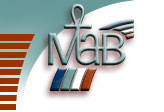 |
|
| Biosphere Reserve Information | ||||
|
RÜGEN |
 © Photo: Michael Weigelt |
|||
|
|
||||
| General Description |
This biosphere reserve is situated in the south-eastern part of Rügen, Germany’s biggest island. Within its 22,800 hectares, almost all coastal forms of the southern Baltic Sea can be found. It includes areas of ground and terminal moraine hills deposited after the last ice age and Holocene depositional features such as sand bars. The inland waters are shallow, interrupted by peninsulas, small islands and hooked spits. Moraine areas are dominated by Fagus sylvatica and Pinus sylvestris forests, however, also pastures, low productive grasslands and coastal vegetation of brackish water can be found. About 13,000 people live in the biosphere reserve (1990) who earn their living mostly from tourism, fishing and agriculture. Traditional land use forms as well as traditional fishing methods are still maintained in the area. The biosphere reserve is especially known for sustainable small-scale cod fishery which is a model for other regions. The Rügen biosphere reserve faces today problems arising from increasing car traffic on the island as well as high unemployment in the region. The so called ‘job motor’ project aims to improve the situation. In the core area of the biosphere reserve, on the Vilm Island, the German International Academy for Nature Conservation is situated. |
|||
| Major ecosystem type | Temperate broadleaf forest or woodlands / coastal marine zone (Baltic Sea) | |||
| Major habitats & land cover types | Moraine landscape with beech forests (Fagus sylvatica), oak-tree and bush forest (Quercus robur); coastal beech communities with Honckenya peploides, Lactuca tatarica; sand dune communities with Scots pine (Pinus sylvestris), Corynephorus canescens; salt meadows and salt reed banks with Juncus gerardii and Bolboschoenus maritimus; shallow inland waters with fennel pondweed (Potamogeton pectinatus), eel grass (Zostera marina) and Fucus vesiculosus; steep coast and natural beaches; agroecosystems with rye, barley, oat, rape etc.; forestry systems with beech, oak and pine; pasture for sheep and cattle | |||
| Location | 54°20'N; 13°39'E | |||
| Area (hectares) | ||||
| Total | 23,500 | |||
| Core area(s) | 349 | |||
| Buffer zone(s) | 3,204 | |||
| Transition area(s) when given | 19,947 | |||
| Altitude (metres above sea level) | -16 to +106 | |||
| Year designated | 1991 | |||
| Administrative authorities | Nationalparkamt Ruegen | |||
| Brief description |
Climatological and hydrological monitoring Inventory of vascular plants Ecosystem management and sustainable uses of the area Conservation of genetic resources: sheep (rough-wooled pomeranian landsheep) Monitoring of road traffic Mapping of different zones of the biosphere reserve Creating new jobs and partnerships in sustainable economy ('Job-motor biosphere') Marketing of products from sustainable economy in regional, national and international partnerships ('Market place biosphere') |
|||
| Specific variables... | ||||
| Abiotic | Climate, hydrology, monitoring/methodologies. | |||
| Biodiversity | Conservation, genetic resources, plants, species inventorying/inventory. | |||
| Socio-economic | Monitoring methodologies, transport. | |||
| Integrated monitoring | Management issues, mapping, planning and zoning measures/zonation, sustainable development/sustainable use. | |||
| Contact address |
Michael Weigelt Blieschow 7a D-18586 Lancken-Granitz Germany |
|||
| Telephone | (49.38303) 8850 | |||
| Fax | (49.38303) 885-88 | |||
|
info@nationalparkamt-ruegen.de |
||||
| Web site | www.nationalparkamt-ruegen.de | |||
| Last updated: 25/03/2005 |